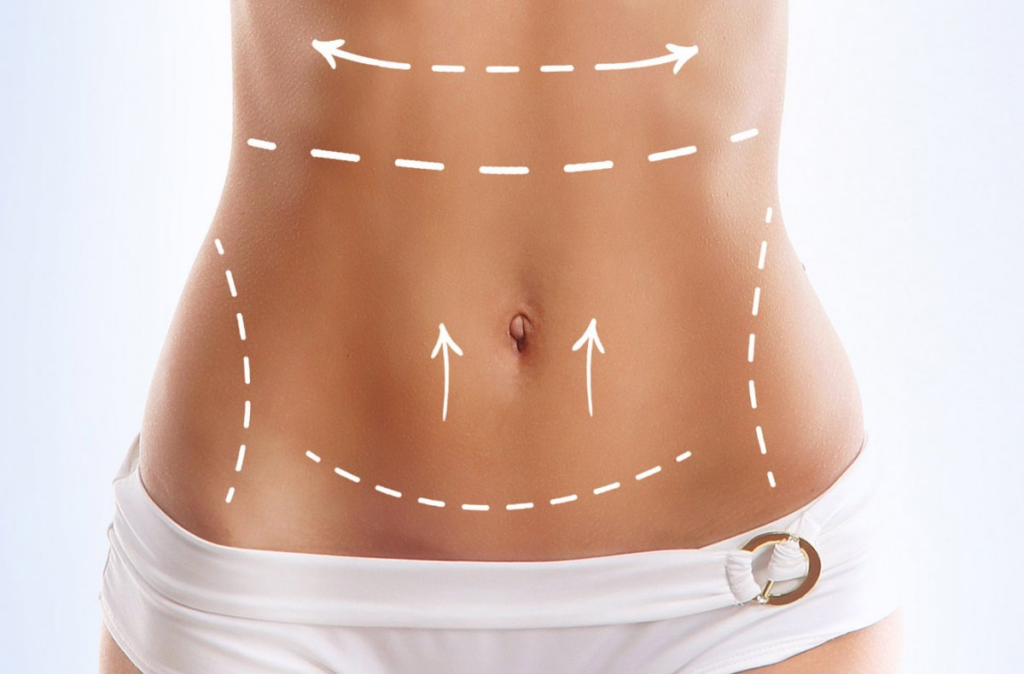A tummy tuck, or abdominoplasty, is a surgical procedure designed to remove excess skin and fat from the abdomen, resulting in a flatter, firmer stomach. However, not all tummy tucks are created equal. The ideal procedure depends on individual needs and body characteristics. This article outlines the different types of tummy tuck surgeries available, helping you understand the options and make an informed decision in consultation with a qualified plastic surgeon.
Table of Contents
Traditional Tummy Tuck Surgery
Traditional abdominoplasty is the most comprehensive tummy tuck procedure. It involves a relatively long incision, typically made low across the abdomen, often hidden within the bikini line. During the procedure, the surgeon separates the skin and fat from the underlying abdominal muscles. This allows for tightening of the weakened or separated abdominal muscles (rectus diastasis), a common issue after pregnancy or significant weight loss.
The excess skin and fat are then removed, and the remaining skin is pulled taut and sutured. This results in a significantly flatter and more toned abdomen. A drain is often placed to minimize fluid accumulation post-surgery. Recovery time for a traditional tummy tuck is generally longer than other procedures, requiring several weeks of downtime. This procedure is ideal for individuals with significant excess skin and fat, and those seeking muscle tightening.
Traditional tummy tucks provide the most dramatic results, effectively addressing both skin laxity and muscle separation. However, the longer recovery period and more extensive surgery should be carefully considered. It’s crucial to discuss the risks and benefits with a surgeon to determine if this is the right option.

Mini Tummy Tuck: A Less Invasive Option
A mini tummy tuck, also known as a limited abdominoplasty, is a less invasive alternative to the traditional procedure. This approach is suitable for individuals with only minor to moderate excess skin and fat in the lower abdomen. The incision is smaller than in a traditional tummy tuck, usually located just above the pubic hairline.
Muscle tightening is typically not performed during a mini tummy tuck, focusing primarily on removing excess skin and fat from the lower abdomen. This results in a shorter recovery time and less scarring compared to a traditional tummy tuck. The procedure is generally less extensive and less disruptive, making it a popular choice for patients seeking less downtime.
Mini tummy tucks are ideal for those with good muscle tone who primarily want to address excess skin and fat in the lower abdomen. However, it’s important to note that a mini tummy tuck may not address muscle separation or significant excess skin and fat in the upper abdomen. A consultation with a surgeon will help determine if this procedure is appropriate for your specific needs.

Extended Tummy Tuck: Addressing Wider Concerns
An extended tummy tuck, also called a fleur-de-lis tummy tuck, addresses a larger area of the abdomen and sometimes flanks. This procedure is necessary for individuals with significant excess skin and fat extending beyond the lower abdomen, often encompassing the flanks and upper abdomen. The incision is longer and more extensive than in traditional tummy tucks, often extending around the sides of the body.
During an extended tummy tuck, the surgeon removes excess skin and fat from a wider area, potentially including the flanks and back. Muscle tightening is also typically performed. This procedure is particularly beneficial for individuals who have undergone significant weight loss or have experienced significant skin laxity due to pregnancy or aging. It allows for a more comprehensive body contouring effect.
Because of its more extensive nature, the recovery time for an extended tummy tuck is longer than for other procedures. Potential risks and complications are also increased, making it crucial to choose a highly experienced and qualified surgeon. This procedure is best suited for individuals with significant excess skin and fat across a larger abdominal area.

Liposuction & Tummy Tuck Combinations
Combining liposuction with a tummy tuck is a common practice that can further enhance the results. Liposuction helps refine the contours of the abdomen, removing excess fat that may not be addressed effectively by a tummy tuck alone. This combination can create a more sculpted and defined abdominal profile. The liposuction is often performed before or after the skin and muscle tightening aspect of the tummy tuck.
The combination of liposuction and a tummy tuck allows for a more comprehensive approach to body contouring. It addresses both excess skin and fat, providing more dramatic results than either procedure alone. However, it’s important to note that this combined procedure increases the complexity and recovery time. The surgeon will carefully assess the patient’s needs and determine the best approach.
This combined procedure is ideal for individuals who desire a more sculpted and defined abdomen, and who have both excess skin and significant pockets of fat. Careful planning and execution by a skilled surgeon are essential to achieve optimal results and minimize risks. A thorough consultation will help determine if this combined approach is the best option for your individual circumstances.
Choosing the right type of tummy tuck requires careful consideration of individual needs, body characteristics, and recovery expectations. A thorough consultation with a board-certified plastic surgeon is crucial to determine the most appropriate procedure and to discuss the risks and benefits associated with each option. Remember that the goal is to achieve a natural-looking and aesthetically pleasing result that improves your self-confidence and overall well-being.
Transform Your Confidence with Surgyteam!
Join the thousands of satisfied patients who have experienced the exceptional care and expertise of Surgyteam’s renowned plastic surgeons. Whether you’re seeking aesthetic enhancements or reconstructive surgery, our dedicated team in Antalya is here to provide you with the highest quality treatment and personalized care.

QA
What is a tummy tuck?
A tummy tuck, or abdominoplasty, is a cosmetic procedure that removes excess fat and skin from the abdomen, resulting in a flatter, firmer stomach.
What are the different types of tummy tucks?
There are different types of tummy tucks, including a full abdominoplasty (which addresses the entire abdomen) and a mini tummy tuck (which focuses on the lower abdomen).
What should I expect during the recovery period?
The recovery period varies depending on the extent of the procedure and individual healing rates. Patients can expect some discomfort, swelling, and bruising in the initial days and weeks. A compression garment is typically worn to minimize swelling and support the healing process.
How do I choose a qualified surgeon?
Choosing a qualified and experienced surgeon is paramount. Thorough research is essential to ensure the surgeon possesses the necessary skills and credentials. Discuss your expectations, medical history, and any potential risks with the surgeon.
What should I consider when selecting a medical tourism package?
When selecting a medical tourism package, consider the clinic and surgeon’s reputation, package inclusions, and the location and accessibility of the clinic. Ensure that all aspects of the procedure are clearly outlined in the package, avoiding any hidden costs.
What are the typical costs and inclusions of a tummy tuck package?
The cost of a tummy tuck varies significantly depending on the location, the surgeon’s experience, the type of procedure, and the package inclusions. Package inclusions typically include the surgical fee, anesthesia, hospital stay (if applicable), post-operative garments, and potentially some follow-up appointments.
How important is safety and post-operative care?
Safety should be the paramount concern when considering medical tourism. Choose a clinic with a high safety record and a commitment to infection control. Ensure that the package includes adequate post-operative care, including follow-up appointments and readily available support.
What is traditional abdominoplasty?
Traditional abdominoplasty is the most comprehensive tummy tuck procedure. It involves a relatively long incision, typically made low across the abdomen, often hidden within the bikini line. During the procedure, the surgeon separates the skin and fat from the underlying abdominal muscles, allowing for tightening of the weakened or separated abdominal muscles (rectus diastasis). The excess skin and fat are then removed, and the remaining skin is pulled taut and sutured. This results in a significantly flatter and more toned abdomen. Recovery time for a traditional tummy tuck is generally longer than other procedures, requiring several weeks of downtime.
What is mini abdominoplasty?
A mini abdominoplasty, also known as a limited abdominoplasty, is a less invasive alternative to the traditional procedure. This approach is suitable for individuals with only minor to moderate excess skin and fat in the lower abdomen. The incision is smaller than in a traditional tummy tuck, usually located just above the pubic hairline. Muscle tightening is typically not performed during a mini tummy tuck, focusing primarily on removing excess skin and fat from the lower abdomen. This results in a shorter recovery time and less scarring compared to a traditional tummy tuck.
What is extended abdominoplasty?
An extended abdominoplasty, also called a fleur-de-lis tummy tuck, addresses a larger area of the abdomen and sometimes flanks. This procedure is necessary for individuals with significant excess skin and fat extending beyond the lower abdomen, often encompassing the flanks and upper abdomen. The incision is longer and more extensive than in traditional tummy tucks, often extending around the sides of the body. During an extended tummy tuck, the surgeon removes excess skin and fat from a wider area, potentially including the flanks and back. Muscle tightening is also typically performed.
What is abdominoplasty with liposuction?
Combining liposuction with abdominoplasty is a common practice that can further enhance the results. Liposuction helps refine the contours of the abdomen, removing excess fat that may not be addressed effectively by a tummy tuck alone. This combination can create a more sculpted and defined abdominal profile. The liposuction is often performed before or after the skin and muscle tightening aspect of the tummy tuck. The combination of liposuction and a tummy tuck allows for a more comprehensive approach to body contouring.
How do I choose the right type of abdominoplasty?
Choosing the right type of abdominoplasty requires careful consideration of individual needs, body characteristics, and recovery expectations. A thorough consultation with a board-certified plastic surgeon is crucial to determine the most appropriate procedure and to discuss the risks and benefits associated with each option. The goal is to achieve a natural-looking and aesthetically pleasing result that improves your self-confidence and overall well-being.



